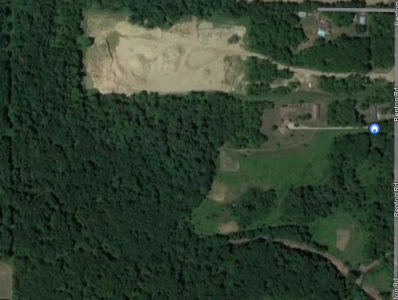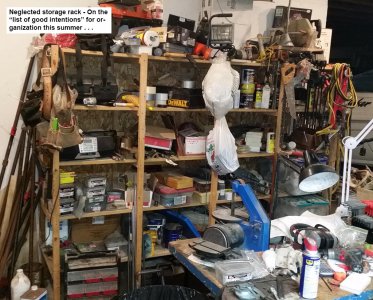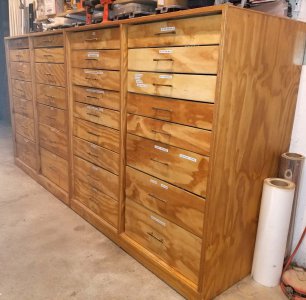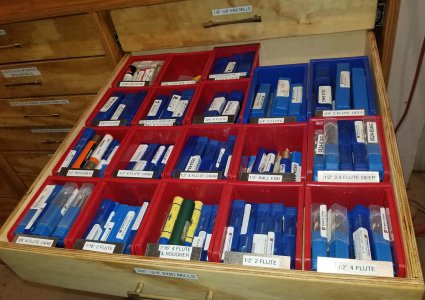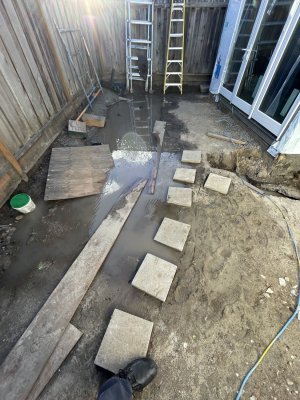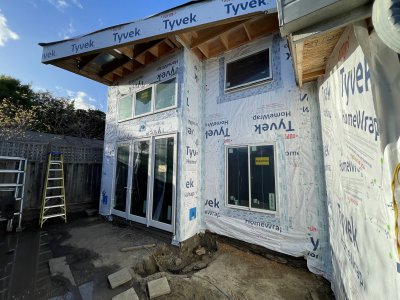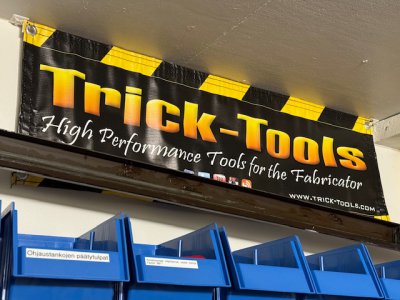@BGHansen
Thank you for taking the time to add the details. I don't think they are boring at all. IMHO, that is a very big project so every aspect is significant in scale.
Good luck with the F600 project. You've gotta do it, LOL. Diesel or gas?
Gas, I was told a 402 when I bought the truck in around 1997 for $1000. Here's a picture under the hood. Any Blue Oval guys out there recognize it or what I need to look at to know the engine size?
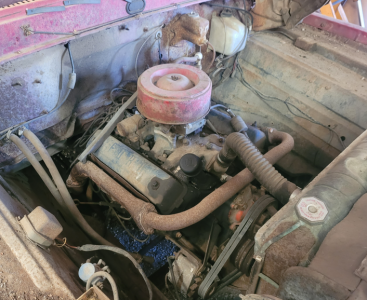
This crowd usually looks hard at the background for details. You notice at the firewall that the master cylinder doesn't have a booster. What the heck?!?! 5 ton load in a 3 ton truck and expect manual brakes to stop it?!? You'll also notice just one hydraulic line. That runs down to under the driver's seat where the vacuum booster and "real" master cylinder set. The one on the firewall is just a slave that pushes fluid to move the real one.
Here she is. Wow, same place I parked it in I think 2012. . .
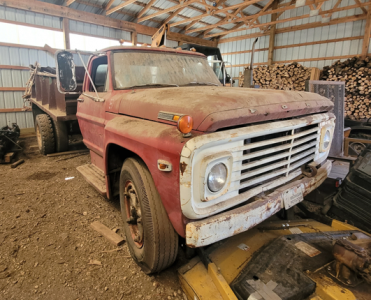
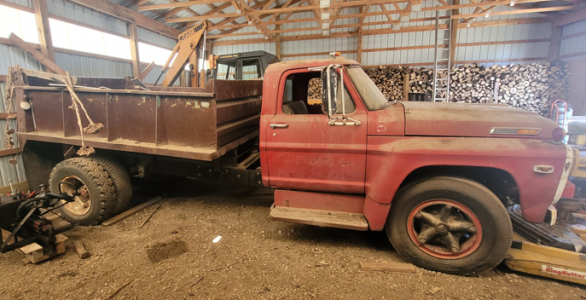
She owes me nothing, I'm sure hoping it won't take much to get her up and running again. One thing I learned in retirement is that retiree's have A LOT of TWO things: Time and Stories. . .
Here's my frame repair from around 2002:
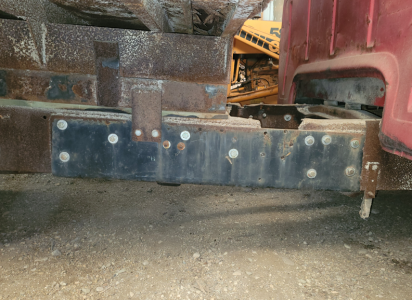
Back story is I was digging what became the test hole for our current in process pond. I was digging in water and pulling sand and gravel. I was coming back the next day and dumping it in the truck to spread on our driveway. I was right in front of our house when I heard a bad noise and was suddenly staring at the sky. The frame folded and went from its normal ~22" off the ground to so low I couldn't fit a floor jack under it. "Well, I wasn't going to dump the load here, but here it's going!". Drove to the side of our barn with my head out the window since I couldn't see over the hood.
A 2 1/4 ton floor jack wouldn't even budge it; it got lifted with a 12-ton bottle jack. I jacked one side up a few inches, slid in some 2 x 12's, lowered, and repeated on the other side. I had the front tires at least a foot in the air and let gravity do the rest. I ended up coming up about 1/4" short per my highly technical string-line check, close enough. I then grade-8 bolted, then welded "frame repair 3/8" thick steel" from Spartan Motors (firetruck chassis company in our town).
And going on and on like the retiree that I am, what the heck caused the frame to fold? Obvious answer is too much weight, but if the dump box is 6' x 8' x 2', wouldn't you think the frame should be able to take a full load?
The title on the truck shows it as a stake truck, not a dump truck. Looking at the chassis frame just ahead of my repair, you'll see what looks like a torched-off plate (that's because it was. . .). Apparently, Ford's process at the time was to bolt 1/8" plate steel lengths to the frame C-channel members depending on what the truck's loading would be. Makes sense to me, low-load truck, maybe 1 or 2 reinforcements. Heavy load, add more plates. There are 4 torched-off ends at the back of the cab.
You'll notice near the rear of my repair a piece of steel that has 2 bolts to my repair steel. This is a bracket for the dump box mount. I'm somewhat guessing here, but I believe a previous owner realized the dump box frame was narrower than the truck's frame and the laminated 1/8" plate bolted to it for added strength. They torched off 1/2" of steel plate leaving just 1/8" of steel "C" channel.
The loaded truck is basically a simply-supported beam with the supports being the tires. The bending moment ramps up, then down as you move from front to rear on the frame. The highest bending moment ends up being about 3'-4' rear of where the steel plates were torched off. I worked for GM, but I would hazard to guess that Ford Engineering would not have produced the truck this way.
Another quick incident is when I popped a 6' wheelie with the truck. The tailgate can be chained to the box so it's limited on how much the tailgate opens as the dump box lifts. I was again digging in wet sand and gravel and spreading it on our driveway. I limited the tailgate to about a 9" opening so I could dump while driving to spread the load. The truck doesn't have live PTO; the hydraulic pump only generates pressure while the clutch is released. My normal process was to release the tail gate, push in the clutch, engage the hydraulic pump, pop the clutch to start the pump, pull the dump box lever and feather the throttle to lift the box. Once the load starts dumping, I'd push in the clutch (which shuts off the pump), pop it in gear, release the clutch and putt along as the box continues to lift and the load slowly dumps as I putt along.
Problem was, that wet sand & gravel didn't flow so well. I'm driving along wondering when more is going to come out with the box continuing to lift when the load cut loose and hit the tailgate. Big center of gravity shift at that point which put the front end 6' in the air. The load hitting the tail gate put a 1' bend in the middle so the load made it out, and I bounced up and down a few feet when the front end came back down.
After changing my skivvies, I clamped a couple 2x4's to the ends of the gate, parked the truck up against a tree and whacked the gate in the middle with the Case backhoe to bend it back.
Yeah, do the math and failure mode analysis after the fact. Wet sand gravel weighs about 125 lbs. / cubic foot; I had a 12,000 lbs. load that smacked that poor tail gate with some velocity.
The poor truck is probably dreading me getting her out again! I'm now a lot older and hopefully a little wiser!
